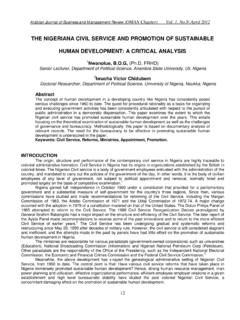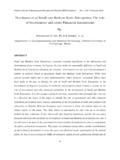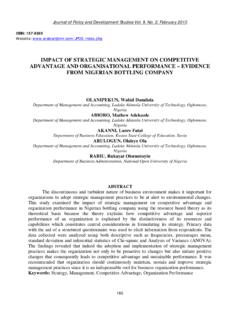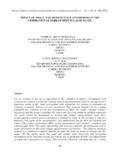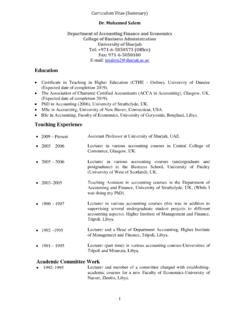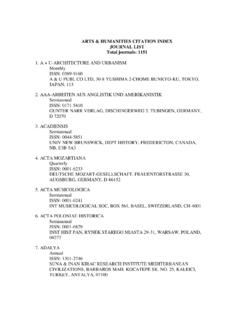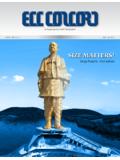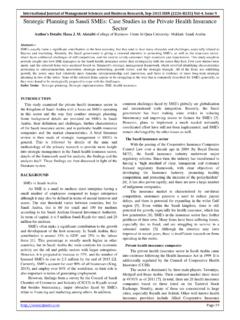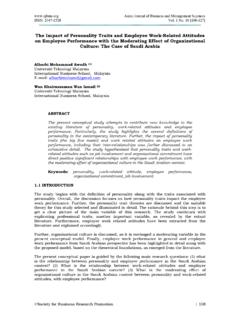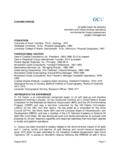Transcription of IMPACT OF CAPITAL STRUCTURE ON THE FINANCIAL …
1 arabian journal of Business and Management Review (OMAN Chapter) Vol. 1, ; July 2012 43 IMPACT OF CAPITAL STRUCTURE ON THE FINANCIAL PERFORMANCE OF NIGERIAN FIRMS Osuji Casmir Chinaemerem Department of Accounting, Banking & Finance Delta State University, Asaba Campus. Delta State Nigeria. & Odita Anthony Department of Accounting, Banking & Finance Delta State University, Asaba Campus. Delta State Nigeria. ABSTRACT This paper examines the IMPACT of CAPITAL STRUCTURE on FINANCIAL performance of Nigerian firms using a sample of thirty non- FINANCIAL firms listed on the Nigerian Stock Exchange during the seven year period, 2004 2010. Panel data for the selected firms were generated and analyzed using ordinary least squares (OLS) as a method of estimation. The result shows that a firm s capita STRUCTURE surrogated by Debt Ratio, Dr has a significantly negative IMPACT on the firm s FINANCIAL measures (Return on Asset, ROA, and Return on Equity, ROE).
2 The study of these findings, indicate consistency with prior empirical studies and provide evidence in support of Agency cost theory. Keywords: CAPITAL STRUCTURE , FINANCIAL Performance, agency cost OVERVIEW OF THE STUDY CAPITAL STRUCTURE is the means by which an organization is financed. It is the mix of debt and equity CAPITAL maintained by a firm. The extent literature is full of theories on CAPITAL STRUCTURE since the seminal work of Modigliani and miller (1958). How an organization is financed is of paramount importance to both the managers of the firms and providers of funds. This is because if a wrong mix of finance is employed, the performance and survival of the business enterprise may be seriously affected. This study wants to contribute to the debate on the relationship between CAPITAL STRUCTURE and firm performance from the agency cost theory perspective using Nigerian date.
3 This study seeks to provide answer to the question, does CAPITAL STRUCTURE affect FINANCIAL performance of firms ? data of thirty firms listed on the Nigerian Stock Exchange (NSE) between 2004 and 2010, representing 210 firm year observations would be used for the study. arabian journal of Business and Management Review (OMAN Chapter) Vol. 1, ; July 2012 44 The rest of the paper is organized as follows: sections two provides the literature review on CAPITAL STRUCTURE and firm performance. Section three discusses the variable descriptions, expectation and methodology. The empirical results and discussion are presented in section four. Lastly, section five concludes the study. Review of Related Literature All modern researches have issues with the Modigliani and Miller (1958) proposition which states that in a world of perfect CAPITAL market and no taxes, a firm s FINANCIAL STRUCTURE will not influence its cost of CAPITAL .
4 This, proposition submitted that firms in a given risk class would be unaffected by FINANCIAL gearing/Weston and Copeland, 1998). Borigham and Gapenski (1996) argue that an optimal CAPITAL STRUCTURE can be attained if there exist a tax sheltering benefits provided an increase in debt level is equal to the bankruptcy costs. They suggest that managers of a firm should be able to identify when the optimal CAPITAL STRUCTURE is attained and try to maintain it at that level. This is the point at which the financing costs and cost of CAPITAL are minimized, thereby increasing firm value and performance. Berle and means (1932) put forward the agency theory which also contributes to the CAPITAL STRUCTURE decision. The theory argues that conflicts arise from the possible divergence of interests between shareholders (principals) and managers (agents) of firms.
5 The primary duty of managers is to returns to shareholders thereby increasing the profit figures and cost cash flows (Elliot and Chiber (2002). However, senses and Meckling (1976) and Jensen and Ruback (1983) argue that managers do not always run the firm to maximize returns to shareholders. As a result of this, managers may adopt non-profitable investments, even though the outcome is likely to be losses for shareholders. They tend to use the three cash flow available to fulfill their personal interest instead of investing in positive not present value projects that would benefit the shareholders. Jensen (1986) argues that the agency cost is likely to exacerbate in the presence of free cash flow in the firm. In an effort to mitigate this agency conflict, Pinegar and Wilbruch (1989) argue that CAPITAL STRUCTURE can be used through increasing the debt level and without causing any radical increase in agency costs.)
6 This will force the managers to invest in profitable ventures that will be of benefit to the shareholders. If they decide to invest in non-profitable projects and they are arabian journal of Business and Management Review (OMAN Chapter) Vol. 1, ; July 2012 45 unable to pay the interest due to debt holders, the debt holders can force the firm to liquidation and managers will lose their decision rights or possibly their employment. Agency theory contributes that leverage firms are better for shareholders as debt level can be used for monitoring the managers (Boodhoo, 2009). Thus, Higher leverage is expected to lower agency costs, reduce inefficiency and thereby lead to improvement in a firm s performance (Kochhar, 1996, Aghion, Dewatripont and Rey, 1999, Akintoye, 2008, Onaolapo and Kajola, 2010).
7 Empirical supports for the relationship between CAPITAL STRUCTURE and firm performance from the agency perspective are many and in support of negative relationship. Zeitun and Tian (2007), using 167 Jordanion companies over fifteen year period (1989 2003), found that a firm s CAPITAL STRUCTURE has a significant negative IMPACT on the firm s performance indicators, in both the accounting and market measures. Mojumder and Chiber (2004) and Rao, and Syed (2007) also confirm negative relationship between FINANCIAL leverage and performance. Their results further suggest that liquidity, age and CAPITAL intensity have significant influence on FINANCIAL performance. Methodology Description of Variables and Hypotheses The variables used in the study are as follows: Debt Ratio (DR): The agency cost theory predicts that higher leverage is expected to lower agency costs, reduce inefficiency and thereby lead to improvement in firm s performance.
8 Bergar (2002) argues that increasing the leverage ratio should result in lower agency costs of outside equity and improve firm performance, all else held constant. From the above contributions, we expect an inverse relationship between leverage (DR) and firm performance. The following hypothesis will be tested: H1: A firm s CAPITAL STRUCTURE should not have a negative IMPACT on its performance. Asset turnover. The efficiency of the management of a firm can be measures by the way and manner they utilize the assets of the firm to yield positive returns to the firm. asset turnover ration is an important FINANCIAL ratio than can be used to achieve the purpose of measuring management efficiency, hence the introduction of the variable, TURN, as a controlled variable, arabian journal of Business and Management Review (OMAN Chapter) Vol.
9 1, ; July 2012 46 in the study it is expected that a positive relationship exists between asset turnover and firm performance. The hypothesis to be tested here is: H2: There should be no positive relationship between asset turnover and firm performance. Age: The age of a firm may also have an IMPACT on firm s performance, hence the introduction of a controlling variable, AGE in this study. Stiochcombe (1965) argues that older firms can achieve experience based economies and can avoid the liabilities of newness. We expect a positive relationship between age and firm s performance. The hypothesis to be tested here is: H4: There should be no positive relationship between firm s age and its performance Asset Tangibility: This is considered to be the major determinant of a firm s performance.
10 The most common argument in the literature favours a positive relationship between asset tangibility and performance. Mackie (1990) concludes that a firm with high fraction of plant and equipment (tangible assets) is the asset base made the debt choice more likely and influences the firm performance. Akistnye (2008) argues that a firm which retains large investments is tangible assets will have smaller costs of FINANCIAL distress than a firm that relies on intangible assets. The relationship between asset tangibility and firm performance is expected to be positive. The hypothesis to be tested here is H5: there should be no positive relationship between firm s asset tangibility and its performance Growth Opportunities; The extant literature considers growth opportunities available to a firm as an important determinant of firm s performance, hence the introduction of a controlled variable, GROW, a proxy for growth opportunities in this study.

